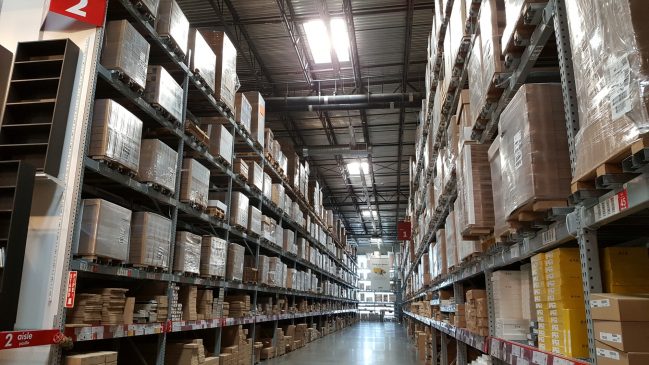It’s easy to realize you need a warehouse but do you know they come in various types? Before contacting commercial real estate to help you search, consider the types of warehouses available and what you’re storing.
Warehouses are not the cold, dark buildings you see on TV crime shows, accessible for criminals to commit crimes. Modern warehouses are bright, clean, and thriving, with the activity necessary to keep your business moving forward.
You need to consider the type of product you will be storing, the difference between a warehouse and a distribution center, and more. Keep reading to learn more about storage facilities, so your warehouse investment meets your needs now and in the future.
Bonded or Customs Warehouse
This is a building where goods arriving from other countries may be stored or used in manufacturing. These facilities can avoid paying duty for up to five years following the arrival of a shipment.
Bonded warehouses allow the importer to sell the products first, then pay duty using proceeds from the sale.
Climate Controlled Warehouse
Climate control maintains a specific temperature. It protects perishable products from extreme temperature variation or moisture.
Dehumidifiers, insulation, thermostats, and HVAC systems maintain airflow, moisture levels, and temperature. Items you may find pharmaceuticals, artwork, meat, and produce inside.
Cold Storage
According to the United States Department of Agriculture, California has 107 refrigerated warehouses.
This warehouse is the equivalent of stepping into a refrigerator. Its purpose is to keep temperature-sensitive items cold to sustain their usability longer.
A surprising number of items use cold storage, including medicine, perishable food, cosmetics, artwork, plants, and candles. To maintain proper cold storage, products arrive and depart the warehouse in refrigerated shipping containers.
Contract Warehouse
This is very similar to the public warehouse option shown below. Instead of operating on a first-come, first-served basis, you have a guarantee of a specific amount of storage space. On-demand warehousing connects a business needing storage with a warehouse with space available.
Cooperative Warehouse
Natural food stores, wineries, farmers, and co-op organizations often use cooperative warehouses. The different groups using the warehouse pool their resources. Each gets warehouse benefits at a lower cost than if they were to lease or purchase a warehouse independently.
Cross-Docking Warehouse
This is a warehouse where goods arrive into the warehouse en route from one location before moving to their final destination. Products arriving on inbound trucks are off-loaded and sorted. They then load onto an outbound truck traveling to the last delivery location.
This type of warehousing reduces waste by providing a consolidation service. It gets all merchandise from various locations onto one truck to a specific place.
This reduces costs by preventing several trucks from traveling to the destination. The trucking company and the consumer save shipping costs.
Distribution Center
Many people believe a warehouse and distribution center are the same. The purpose of each warehouse is different.
A warehouse stores products for a lengthy time. A distribution center holds products for a short time. It has a higher in-warehouse turnover of products.
Large retailers often have centrally located distribution centers. This allows the business to quickly and easily restock its store inventory.
A distribution center is customer-centric. This means its general position is close to where the store is for quick delivery of products.
Distribution centers contain advanced technology to assist workers. Depending on the type of business, a distribution center may have pick and pack services, cross docking, product mixing, or packaging. The distribution center usually has more services taking place within its walls.
Hazmat Warehouse
The building structure is similar to a temperature-controlled warehouse. It stores hazardous materials needing specific storage conditions. This type of warehouse is generally in remote areas because of the danger in the event of a disaster.
Hazmat storage is mandatory for biological and radioactive materials, gasses, and chemicals. It is also necessary for storing weapons, ammunition, and explosives.
Depending on the location and items in storage, it may need climate control and enough space to prevent contact between products. Other requirements may include hazmat-trained staff and 24-hour security.
On-Demand Storage
This is an up-and-coming area of the warehouse business. The connection is with companies that need warehouse space temporarily.
This may be due to seasonal demands, storage of items during a business relocation, or more.
Pick, Pack, and Ship Warehouse
This warehouse is set up to handle on-demand shipping. This happens when a consumer places an order for a product.
When an order comes into the business, the warehouse receives a message called a pick list. The pick list instructs workers what items to pull and pack for shipping. They then attach a label and ship it to the consumer.
Private/Proprietary Warehouse
The company owning the warehouse manufactures the product inside. This gives the organization a high level of control in handling and storing its goods. When you own the buildings on all levels of your business, you have more control over the product flow, storage, inventory, and shipping.
Public Warehouses
Another term for a public warehouse is a third-party logistics warehouse. This means it is owned and operated by a company that leases the space to other commercial operations. The location will receive, hold, store, and ship products from another company.
Typical warehouse management is on a pallet-in/pallet-out basis. The company cost for a product in the warehouse is calculated using the number of pallets or square footage the product takes in the warehouse.
Public warehouses are ideal for small businesses or seasonal retailers. The cost is less than having a private warehouse.
If you are seeking a warehouse for lease, consider this option. Keep in mind that available space is on a first-come-first-serve basis.
Reverse Logistics Warehouse
This is a warehouse for backward shipments (product returns). Depending on the reason for the return, the product may be repackaged and returned for sale. It may be repaired, recycled, destroyed, or refurbished in other situations.
Some companies maintain a separate reverse logistics warehouse that strictly handles product returns. Other businesses conduct shipping and returns at the same warehouse facility.
Smart Warehouse
This is the warehouse of the future. It uses automation systems and related technology to increase efficiency.
Automation increases production and prevents mistakes. It also reduces the number of workers necessary to run the warehouse.
Technology helps with product receiving, storing, picking, and shipping. The software maintains an ongoing inventory of all products in-house.
Selecting From the Types of Warehouses
If your head is spinning and you aren’t sure what to look for in a warehouse for sale, consider a few key factors.
Consider the storage needs of your product. Is it small or large and bulky? Does the warehouse have the software and hardware configurations necessary for your business?
Providing quick delivery is necessary for customer satisfaction. Consider the warehouse’s proximity to your customer base. If not close to customers, consider its accessibility to transportation facilities.
Consider the security level of your warehouse. Is it a safe location? Do you have security staff and cameras? You need protection from vandalism or theft.
How to Find a Warehouse
With so many types of warehouses, you may be wondering how you can ensure that what you purchase or lease meets your needs.
Commercial Orange County is a full-service commercial real estate brokerage firm. Call us at (877) 775-9625 to discuss your requirements. We will help you find the proper warehouse for your business.


